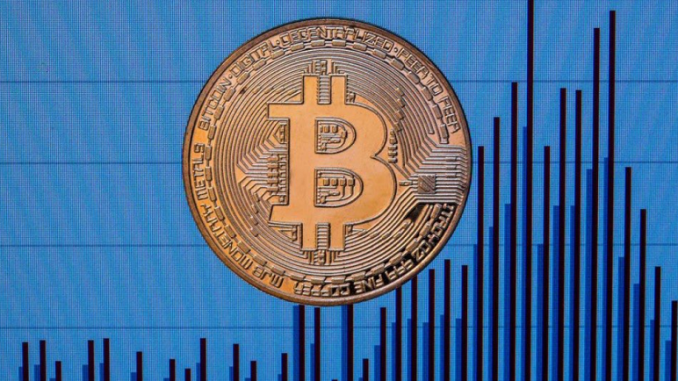Commentary: 3 Reasons Bitcoin Is Worth So Much Right Now
By SPENCER BOGART
Bitcoin is a different kind of beast that can be difficult for people to understand. New things usually are. And while Bitcoin is nearly nine years old, it represents a completely new type of asset. Let’s break down what I perceive to be the three major components of Bitcoin’s value:
Payments — What people think of
As investors near the Bitcoin iceberg, the first thing they see is payments—after all, it’s a cryptocurrency, right? Currencies are used for payments and so Bitcoin must be all about payments.
It’s true: Bitcoin is certainly used for payments, and this is an important part of its value. However, it’s not widely used for payments and, while it may be increasingly important over time, it isn’t the most important component of Bitcoin’s value today.
Why don’t people use Bitcoin for payments more often? Simply put, people don’t like to spend appreciating assets. Given the choice of payment methods, people like to spend in the “currency” that is likely to be worth the least tomorrow. At this point, that’s not Bitcoin.
Furthermore, most people don’t buy Bitcoin for payments. That’s simply not why they acquired it. Even if you could, very few investors would pay for their coffee with Apple (AAPL, -1.11%) stock because that’s simply not the reason they bought Apple stock in the first place—same with Bitcoin.
Lastly, people don’t generally use Bitcoin for payments because goods aren’t broadly priced in BTC terms. Goods aren’t broadly priced in BTC terms because, if they were, the price would have to update several times each minute just to maintain a consistent revenue for the seller.
In short, the major drawback to using Bitcoin for payments is that it is volatile, which is neither a great ingredient for payments (medium of exchange) nor the pricing of goods (unit of account).
Longer term, however, I expect Bitcoin will be increasingly used for payments because, as adoption grows, volatility declines and rapid appreciation diminishes.
Digital gold — Why people buy
While payments are the first thing that people think of for Bitcoin, the reason that most people buy today is its utility as “digital gold”—this is the center of buoyancy for the Bitcoin iceberg.
People are attracted to an asset that is provably scarce, nearly impossible to seize or censor, and part of a decentralized and permission-less network that anyone can participate in.
As a venture firm dedicated to the blockchain and crypto ecosystem, we’re constantly collecting data points from around the world, but one of my favorite anecdotes is a doctor in Brazil who has converted his medical practice one day a week into a “bitcoin consultancy,” where all he does is help doctors and other people get set up with Bitcoin.
The main reason they want to buy? They’re terrified of wealth confiscation in light of a burgeoning public deficit. To be clear, they’re not rushing to put all of their assets into Bitcoin, but it’s a piece of a defensive strategy for some Brazilians to retain their hard-earned wealth.
Programmable asset — Why Bitcoin will attract mass appeal
Lurking below the surface, the most under-appreciated component of our Bitcoin iceberg is its value as a programmable asset.
When we take something from the physical world and make it entirely digital (“natively digital”), we shed many of the constraints of the physical world. Today, our legacy financial infrastructure is not natively digital.
Companies like PayPal (PYPL, -1.10%) have done a tremendous job making it easier to use our outdated financial infrastructure in a digital age, but they didn’t recreate the infrastructure itself. In contrast, blockchains are enabling new natively digital financial infrastructure in the form of Bitcoin, Ethereum, and others.
As a result, we can do new things: We have programmable assets for the first time.
I’ll give you two early examples within Bitcoin: multi-signature transactions and time-locked transactions. The former allows me to send Bitcoin to an address and specify that the value cannot be moved unless, say, two-of-three, or three-of-five people agree (or whatever parameters I set). Similarly, time-locked transactions allow me to send Bitcoin to an address and specify that it can’t be moved until some specific point in the future.
Both of these examples are things I could hack onto legacy financial infrastructure. I could create a trust, for example. But these things require hours of legal cost and logistics time. In Bitcoin, that cost and effort has been reduced to a few lines of code.
These are two early examples of what I believe will eventually be dozens and then hundreds of unique capabilities. Most encouragingly, young developers are picking up these puzzle pieces and assembling them in novel ways that could fundamentally change the fabric of finance and the way we transact.
Ultimately, Bitcoin’s value as a programmable asset is the most viable path to mass adoption: People will adopt Bitcoin because it’s the easiest (or only) way to complete tasks X, Y, and Z.
This is software eating the world of financial assets for the first time. I don’t know what this trend will lead to or the amazing things that will result, but I see a world of new opportunities over the next three to five years and couldn’t be more excited about the quality of teams entering the space and the direction this industry is headed.
Spencer Bogart is a partner at Blockchain Capital. Bogart is an investor of Bitcoin.

